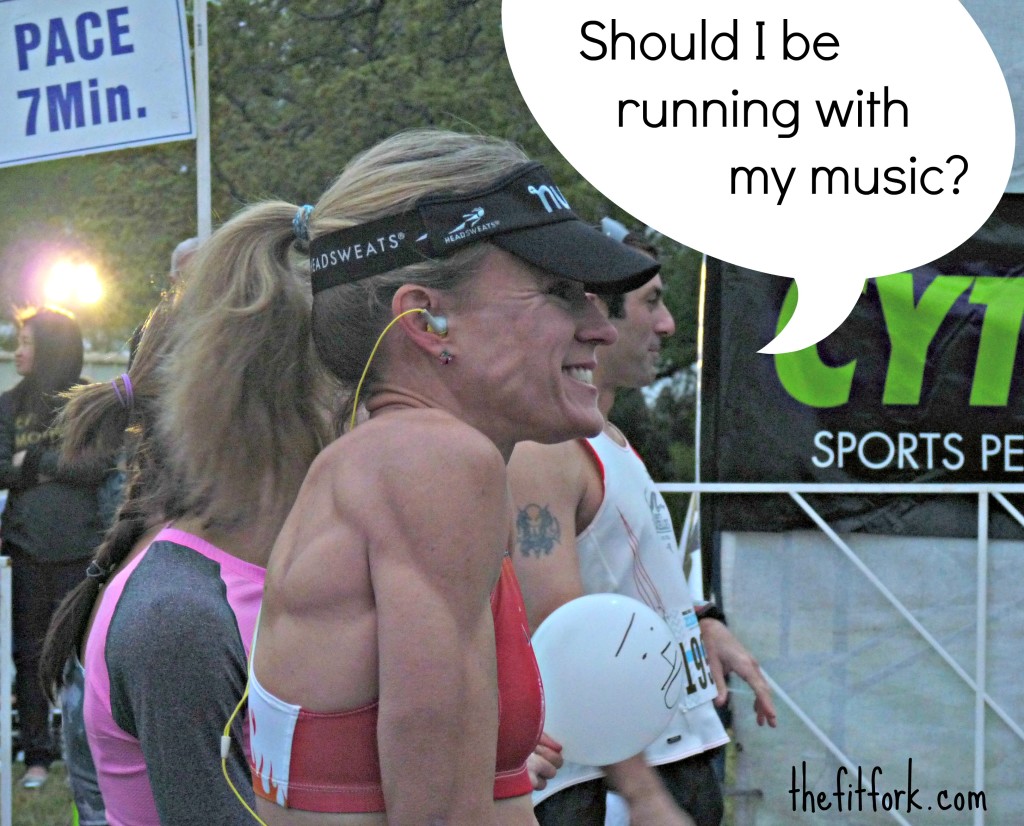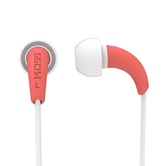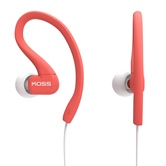Wondering if you should rock out with music while you run or workout in the gym? Poll your friends or Google some scientific studies and you’ll quickly discover that this ongoing debate has persuasive arguments booming out of both sides of the proverbial box. Some athletes wouldn’t dream of running a single step or lifting a dumbbell without pumping up the volume, while other athletes turn their noses up at anything but the unplugged, purist approach. There is no arguing that music has a beat that makes the body want to move. On the other hand, there are legitimate reasons to keep your entire mind “on call” when you run or workout. As usual, I support the best of both worlds. That is, knowing how to incorporate music into training on occasion and then being able to ultimately perform without it. And, make sure to read down to the bottom because I’m going to fill you in on the really awesome Koss “FitClip” and “FitBud” headphones that are designed by women, for women.
When To Mix Music and Exercise
To Enhance Performance with “Up-Tempo: Songs: Music makes a great substitute for that absent training partner who is just a little bit faster or stronger than you. When I don’t have a friend on the track to chase down and have to finish speed workouts alone, I will often wear headphones to help me kick it in high gear. I always wondered how music made me feel like I just ate my Wheaties. Well, according to a 2012 study, music can act as a metronome to help maintain a steady pace, reduce false steps and decrease energy expenditures. The researchers at Hallam University found that participants who cycled in time to music required 7 percent less oxygen to do the same work as their music-free counterparts. According to another music and exercise researcher, Costas Karageorghis from the School of Sport and Education at London’s Brunel University, the “sweet spot” for using music to enhance performance is between125 – 140 beats per minute. So, pick up-tempo songs, not slow love ballads!
To Get Motivated with “Favorite” Songs: On days when it’s hard to get out the door, cranking up the iPod and exercising to a few of my all-time favorite songs helps me readjust my mood. This isn’t just a touchy-feely claim; there is real science behind this type of attitude adjustment. A recent study showed that subjects who listened to music they reportedly “loved” triggered the release of dopamine, the famous feel-good neurotransmitter. But, when the same participants listened to generic music selected by the researchers, dopamine levels remained stagnant. In addition to being the brain’s reward and pleasure center, it’s no surprise to find out that dopamine not only enables our brain to see rewards, but sends the signals we need to take action and move toward achieving them.
To Trick Yourself into Beating Fatigue: When your body starts sensing signs of extreme exertion, it notifies your brain to take a break. But, the use of music can keep you going despite rising levels of lactic acid in the muscles, a pounding heart beat and increased sweat production. Experts say that music overrides the physiological feedback for the brain’s conscious attention – it’s a diversion in the same way that the phlebotomist’s office always has an interesting photo to look at while you’re getting blood drawn. However, during intense fatigue, music can lose its magic to override the suffering. Anyone who’s ever hit the wall in a marathon knows there’s not a song ever sung that can trick your mind out of the pain. However, the right music can elevate your mood and persuade you to ride out the waves of exhaustion, rather than giving up.
When Not to Mix Music with Exercise
When Coming Back from Injury: If you are rehabilitating from an injury, it’s best to work out without music. Experts say that listening to music can distract an athlete from the exercise at hand, encouraging a ‘push-through-the-pain mentality’ – even if it’s at a subconscious level. Instead of disassociating yourself from distress with music, try turning inward and listening to your body’s feedback.
When Competing: When competing, the best athletes seem to have every sense focused on achieving top performance without the aid of any external stimulus such as music. It’s true that listening to music prior to your start is a great way to calm down – or get pumped up. But, during the actual competition, music has the potential to become a disastrous liability, a disadvantage which trumps any performance benefit you could potentially have achieved with it. Think how stupid you would feel to lose your lead because you didn’t hear the footsteps of a runner challenging you from behind or you missed an important call from a referee and ending up with a DQ. Or, even just the inconvenience of your device losing its battery charge halfway through a marathon and being stuck lugging the dang thing to the finish line. Also, be aware that some sports governing bodies don’t allow the use of music, viewing it as a “performance enhancer” that gives unfair advantage on the playing field. For example, US Track & Field (USTF) bars the use of headphones or music for athletes who are competing for “awards, medals or prize money.”
When in Potentially Hazardous Situations: Put safety above your playlist. Use common sense when it comes to running or exercising with headphones on. If the volume is cranked and you are totally tuned out, you may not hear oncoming traffic, unfriendly dogs, or potential criminals. In races and competitions, you may miss important directions from the officials and not benefit from the thrill of hearing the cheering crowd.
Also:
Keep it Courteous: Also remember that one man’s music is another man’s migraine. If you’re in the gym, garage, or running with a speaker vest and playing your music “out loud” remember to be courteous and keep it at a reasonable volume.
A Review of KOSS Fit Series Headphones
So, I think we should all mix music with our exercise at least every once in a while. If you agree, you’ll want to have some great headphones to maximize the listening experience. Nothing worse than a crackling, cheapo pair of headphones that wants to slide out of your sweaty ears. Or, worse yet, won’t even fit in your ears. Well, earlier this month, the Koss Fit Series hit the market and they sent me both of their new models to try out– the FitClips and the EarBuds.
So, what’s great about the Koss FitClips? These headphones use an original design to ensure that perfect fit we women want; they measure in 33% smaller than the standard earbud. The speaker element rests comfortably in the ear and comes with one of three sizes of ear cushions to make sure a girl is getting the perfect ear “seal.” The ear clip is soft and flexible and after running 8 miles in it this morning, not once did it fall out or slip thanks to both the design and sweat-resistant coating. In fact, I forgot that I was wearing them! There are five vibrant colors available; mine are a pretty blue that reminds me of the Texas Mountain Laurel that I see on my trail runs.
Another thing to love about the Koss Fit Series, Darra Torres is their spokeswoman. Named as one of the “Top Female Athletes of the Decade” by Sports Illustrated, the swimming sensation is about my age and such an inspirational role model. Darra believes that it’s never too late to accomplish your dreams and that determination trumps age – I love this! These are words to live by!
If you’re interested in a pair, head over to Koss and use the code Fit4Life for $5 off plus free shipping.






